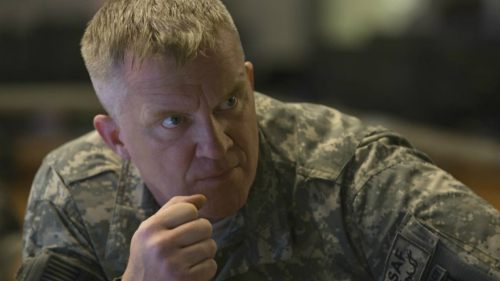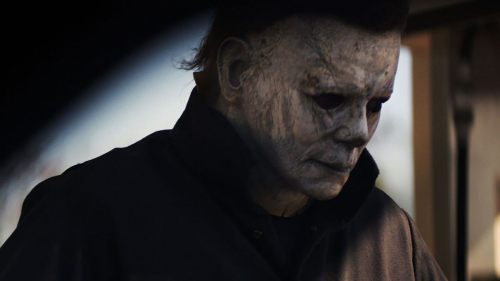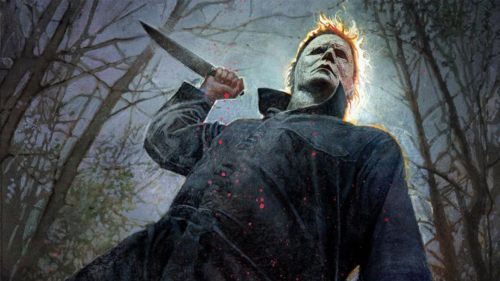Sunday Read: The Killing Of The Genre-Film Title Sequence
Among the many shout-outs and references to the first two Halloween films in David Gordon Green’s reboot (it’s nice to know the Elrods never left Haddonfield), perhaps the most gratifying is the inclusion of an opening-credits sequence homaging those seen in the 1978 and ’81 films. Not just for the specific thrill of hearing John Carpenter and co.’s variation on his classic theme over spooky-pumpkin imagery and that familiar orange lettering, but because opening-credits sequences for horror films in general have become a lost art.
Today, it’s commonplace for scary movies, as well as sci-fi/fantasy epics, actioners and thrillers, to begin with just the title and then jump right into the fray. Judging from online comments when the subject has come up before, a lot of modern viewers like it that way; why should we have to read a bunch of names before getting to the good stuff? That’s an unfortunate point of view, as a good title sequence can do a lot to get you in the right anticipatory mood. There’s no better example than the original Halloween; when I first saw the movie, at age 12 during its 1979 rerelease, Carpenter’s nerve-jangling music and the slow zoom on the jack o’lantern had me scared even before little Michael’s point of view crept into his house, grabbed a butcher knife and headed upstairs.
’79 was the year I started seeing horror movies on the big screen, and I was treated to some of the genre’s best credits sequences: the title of Alien slowly forming over the cast and crew’s names as Jerry Goldsmith’s cold, eerie tones promised extraterrestrial doom; the prowling underwater camera accompanied by John Williams’ landmark notes at the beginning of the rereleased Jaws. The very first R-rated frightfest I saw in a theater, though, bucked the trend: Phantasm offered just that moniker before taking us straight to its first graveyard setpiece. That was one of the many ways Don Coscarelli’s surreal, off-kilter fear fest caught me off guard and subverted my expectations; I had a chance to ask him about it at an Alamo Drafthouse Phantasm screening earlier this month, and he explained that not only did he want to get directly to the scary stuff, but he felt that the movie’s creators should “take a bow,” figuratively speaking, after it was over rather than before it began.
There was some small but conspicuous precedent for dispensing with the credits until a film’s conclusion. Orson Welles did it first with Citizen Kane, Francis Ford Coppola followed suit on the first two Godfather movies, and so did William Friedkin on The Exorcist. George Lucas saved all the names till the end on the Star Wars adventures, though the scrolling backstory crawls allowed John Williams’ fanfare to rouse the audience at the outset as it would during a traditional credits montage. (Lucas was fined by the Directors Guild of America for not billing The Empire Strikes Back’s Irvin Kershner up front, and resigned from the guild in protest.) Stanley Kubrick eschewed opening credits on 2001: A Space Odyssey and A Clockwork Orange.
Yet when he ventured into the horror genre with The Shining, Kubrick crafted one of the most memorable title sequences in the genre’s history: the Torrances’ car wending its way through foreboding mountains as Wendy Carlos and Rachel Elkind’s variation on the classic Latin hymn “Dies Irae” creeps under the viewer’s skin. It’s a perfect mood-setter, and The Shining is unimaginable without it. The reps of many horror favorites, in fact, are inextricably tied to their opening credits. Would Psycho be Psycho without title-sequence pioneer Saul Bass’ stark linear graphics backed by Bernard Herrmann’s anxiety-inducing strings? The freakily jagged imagery of Kyle Cooper’s intro to Se7en set a trend for the visual approach to not just title sequences, but movies in general.
That was 23 years ago, and while Cooper is still plying his eye-catching trade, his work is typically seen at the end of the films instead of the beginning. Today, many horror films dispense with the possibility of setting a tone during opening credits, and practically every action/special-effects megapicture does. That’s a trend that started back in the late ’80s, on the likes of Lethal Weapon 2 (though Clint Eastwood did it even earlier, on 1982’s Firefox). Tim Burton’s first Batman got audiences excited from the get-go with its Bat-logo graphics under the credits and Danny Elfman’s sweeping heroic theme, but when Christopher Nolan rebooted the franchise with Batman Begins, even the title itself was saved till after the movie was over.
Not only has the trend away from opening-credits sequences taken some of the flavor out of the cinematic experience, it has also, I believe, given short shrift to the work of the films’ composers. A title sequence at the beginning gives a scary or dramatic or exciting musical piece the chance to make a truly memorable impression, and even enter the zeitgeist, in a way it just can’t when played at the end, when the audience is getting up and heading for the exits. There are many opening-title themes from the ’70s and ’80s that continue to reverberate even with fans who weren’t born at the time, from Jaws to Star Wars to Halloween to Brad Fiedel’s chung-chung chung cha-chung from The Terminator. Are there any themes from movies of the 2000s that resonate the same way? The only folks keeping the faith are the guardians of James Bond at Eon Productions, who have been maintaining the animated-credits-plus-pop-song tradition for over 50 years now. As the 007 franchise looks to be reinvented following the next and last Daniel Craig entry, here’s hoping that’s one facet of the films that they don’t feel needs changing.



